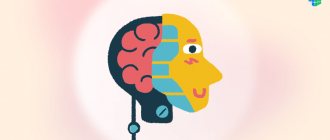Methodological development “Imagination and creativity”
Natalya Sevostyanova
Methodological development “Imagination and creativity”
Introduction.
Imagination is more important than knowledge.
A. Einstein
imagination plays an extremely important role . of imagination and creativity in a person has been relevant from ancient times to our time. The ability to create - what is it , a given or the result of enormous efforts of the individual? There is no answer to this question and, probably, hardly anyone can answer it.
Imagination can only be in a person who transforms the world and develops imagination . Possessing a rich imagination , a person can live in different times, which no other living creature in the world can afford. The past remains in memory, and the future is represented in dreams and fantasies. What do you think would happen if a person did not have imagination? And how could they master the school curriculum without imagination ?
Leonardo da Vinci, A. Einstein, L. Tolstoy, and a great many famous and unknown names, representatives of various professions, this list can be continued - a list of people who showed a creative approach in any type of activity and realized their abilities in any field. As a rule, relatives and friends, catching the baby’s first movements to the world around him, prophesy a great future for the newborn. The imagination of parents in this area has no limits. They fantasize and put forward many hypotheses about who is in front of them. This is a future great or great scientist, commander, composer, pop performer, athlete, etc. But these assumptions remain only imagination , nothing more. As objects of research, imagination and creativity are of interest to such sciences as philosophy, psychology, etc.
The role of imagination in creativity is unique . It can be defined as the process of transforming ideas about reality and creating new images on this basis. That is, the imagination turns on every time we think about any object without having direct contact with it. Creative imagination allows you to transform this idea.
The purpose of my work is:
1. Introduction to the general characteristics of imagination in psychology .
2. Identify the features of the formation of imagination in human ontogenesis.
3. Consider the imagination of children in the process of creative activity .
§1. General characteristics of imagination in psychology .
Imagination is a mental cognitive process that consists of the creation of new images, on the basis of which new actions and objects arise. Thanks to imagination , a person creates , intelligently plans and manages his activities. Almost all human, material and spiritual culture is a product of the imagination and creativity of people . Imagination takes a person beyond his immediate existence, reminds him of the past, and opens up the future. With a rich imagination , a person can “live”
at different times.
It is customary to distinguish several types of imagination :
Active imagination is always aimed at solving a creative or personal problem. In an active imagination there is little daydreaming and “groundless” fantasy. Active imagination is directed to the future and operates with time as a well-defined category (that is, a person does not lose his sense of reality, does not place himself outside of temporary connections and circumstances). Active imagination , finally, is awakened by a task and directed by it, it is determined by volitional efforts and is amenable to volitional control. It includes the following types:
Recreating imagination is one of the types of active imagination , in which the construction of new images occurs, based on the creation of certain images that correspond to the description. A person fills the source material with the images he has.
Creative imagination is a type of imagination during which a person independently creates new images and ideas that are valuable to other people or society as a whole and which are embodied in specific original products of activity, involves the independent creation of an image, thing, feature that has no analogues .
Without a sufficiently developed imagination, a student’s educational work cannot proceed successfully. the imagination participates in all cognitive processes of a student, the more creative his educational activities will be.
§2 Features of the formation of imagination in human ontogenesis.
The main condition for the development of imagination is its inclusion in a wide variety of activities.
Imagination can be trained to develop, like any aspect of a person’s mental appearance.
develop your imagination in different ways, but always in activities that, without imagination, cannot lead to the desired results. We must not force the imagination , but captivate it.
The peculiarity of imagination as a process is the formation of visual images of objects that were not previously perceived by the subject. Any imagination generates something new, changes, transforms what is given by perception. These changes and transformations can be expressed in the fact that a person, based on knowledge and relying on experience, imagines , that is, creates for himself a picture of something that he has never actually seen himself. For example, a message about a flight into space encourages our imagination to paint pictures of life in zero gravity, fantastic in its unusualness, surrounded by stars and planets. The factor that stimulates the activity of the imagination are various connections between phenomena, events, and objects . They are capable of causing a free play of associations.
Let us give a classification of some forms of imagination .
Active imagination is characterized by the fact that, using it, a person, of his own free will, by an effort of will, evokes in himself the appropriate images. Creative active imagination is the independent creation of new images in relation to the subject. Manifests itself in the products of activity embodied in practice. Images of passive imagination arise spontaneously , regardless of the will and desire of a person.
Productive imagination is distinguished by the fact that in it reality is consciously stated by a person, and not simply mechanically copied or recreated. But at the same time, she is still creatively transformed . Reproductive imagination aims to reproduce reality as it is, and although there is also an element of fantasy, such imagination is more like perception or memory than creativity .
“The main feature of the imagination ,” writes E. I. Ignatiev, “in one or another specific practical activity is the transformation and processing of perceptual data and other material of past experience, resulting in a new idea.”
As you can see, an essential feature of imagination is the subject’s ability to create new images. But this is not enough, because then it is impossible to distinguish between imagination and thinking .
Understanding imagination as a process opposite to thinking, and thinking that proceeds according to the laws of logic as uncreative, is unlawful . One of the features characteristic of imagination is that it is associated not only with thinking, but also with sensory data. There is no imagination without thinking , but it cannot be reduced to logic, since in it (in imagination )
transformation of sensory material is always assumed.
Thus, let us take into account the fact that imagination is both the creation of new images and the transformation of past experience, and the fact that such a transformation takes place with the organic unity of the sensory and rational.
Creative imagination is the activity of a person or a group of people to create new, original, socially significant values.
A. S. Pushkin wrote: “Every talent is inexplicable. How does a sculptor see the hidden Jupiter in a piece of Carrara marble and bring it to light, with a chisel and hammer, crushing its shell? Why does the thought come out of the poet’s head already armed with four rhymes, measured in slender, monotonous feet? “So no one except the improviser himself can understand this speed of impressions, this close connection between his own inspiration and alien external will...”
Artistic talent presupposes acute attention to life, the ability to choose objects of attention, consolidate these impressions in memory, extract them from memory and include them in a rich system of associations and connections dictated by the creative imagination .
Many people engage in activities in one form of art or another, at one time or another, with greater or lesser success. An artistically gifted person creates works that have lasting significance for a given society for a significant period of its development. Talent gives rise to artistic values that have enduring national and sometimes universal significance. A master of genius creates the highest universal values that have significance for all times.
Artistic creativity begins with keen attention to the phenomena of the world and presupposes “rare impressions”, the ability to retain them in memory and comprehend them.
An important psychological factor in artistic creativity is memory . For an artist, it is not mirror-like, selective and of a creative nature .
Consciousness and subconsciousness, reason and intuition participate in artistic creativity In this case, subconscious processes play a special role here.
Creativity exists wherever a person imagines , combines, changes and creates something new, no matter how small this new thing may seem compared to the creations of geniuses. If we take into account the presence of collective creativity , which unites all these often insignificant grains of individual creativity , it becomes clear what a huge part of everything created by humanity belongs to the nameless collective creative work of unknown inventors.
The psychology of creativity manifests itself in all its specific types: inventive, scientific, literary, artistic, etc.
Creative activity , based on the combining ability of our brain, is inextricably linked with imagination or fantasy .
The role of imagination in creativity is unique . In addition to developing the thought process, it helps to go beyond the ordinary, thereby establishing the opponent as an integral person. Modern society is very difficult to surprise. Every time we have to come up with something new, somewhat original, in order to attract, interest, and most importantly convince in the interpretation of this species.
It can be defined as the process of transforming ideas about reality and creating new images on this basis.
Creativity is a process that results in fundamentally new or significantly improved ways of solving certain problems. It is clear that creative thinking and imagination are related .
The following features of creative imagination :
• with its help, completely new images are created, not based on their description, but on the basis of the subject’s own thoughts;
• can be either voluntary or involuntary;
• the ability to creatively imagine is partly determined at birth, but it can be developed;
• The relationship between imagination and creativity can be seen in their similar stages and techniques.
Imagination is one of the main aspects of the successful performance of an actor, artist, writer, poet, director and other creative personalities . Without imagination , it is difficult to imagine any embodiment of a creative concept . Methods for developing creative imagination can be very diverse.
Methods for developing imagination also include the ability to mentally focus on any imagined object, subject, with a gradual increase in the number of small details and details.
Speaking about such an issue as techniques for developing imagination , it is important to note the development of the ability of so-called initiative imagination , when we make certain efforts to imagine and imagine certain objects, trying not to be distracted by anything extraneous, but to see the goal in front of us and have a clear understanding.
Creative imagination develops most actively in the process of active creativity . As often happens, without having the slightest idea of how to start or finish something, a creative person simply makes an effort to sit down at the instrument and strike the first chords, or take an easel and go out into nature.
Inspiration doesn't usually ask when it will come. It all starts when we make at least a small effort to develop and activate our imagination and apply what we receive in practice.
Images of creative imagination are created through various techniques of intellectual operations. In the structure of creative imagination, two types of such intellectual operations are distinguished. The first is the operations through which ideal images are formed, and the second is the operations on the basis of which the finished product is processed.
One of the first psychologists to study these processes, T. Ribot, identified two main operations: dissociation and association.
Dissociation is a negative and preparatory operation during which sensory experience is fragmented. As a result of such preliminary processing of experience, its elements are able to enter into a new combination.
Without preliminary dissociation, creative imagination is unthinkable . Dissociation is the first stage of creative imagination , the stage of preparing material. The inability to dissociate is a significant obstacle to creative imagination .
Association is the creation of a holistic image from elements of isolated image units. The association gives rise to new combinations, new images. In addition, there are other intellectual operations, for example, the ability to think by analogy with particular purely random similarities.
The desire to understand and explain the imagination attracted attention to psychic phenomena in ancient times, supported and continues to awaken it in our days. Most scientists who study the phenomenon of imagination are of the same opinion that imagination is characteristic only of humans, which is strangely connected with the activities of the body, being at the same time the most “mental”
of all mental processes and states.
of imagination is still unknown . Scientists cannot explain the mechanism of imagination , its anatomical and physiological basis.
creative imagination is expressed in constructing an image of the means and the final result of objective activity, as well as
in creating a behavior program when a problem situation is characterized by uncertainty.
Creative imagination , as already mentioned, the creation of a new, original image, idea. In this case the word "new"
has a double meaning: they distinguish between objectively and subjectively new. Objectively new - ideas that do not exist at the moment. This new thing does not repeat what already exists, it is original. Subjectively new is new for a given person. It can repeat what exists, but a person does not know about it. He discovers it for himself as original, unique and considers it unknown to others.
Creative imagination proceeds as analysis (decomposition)
and synthesis
(combination)
of knowledge accumulated by man. In this case, the elements from which the image is built occupy a different position, a different place compared to what they occupied previously. A new image emerges from a new combination of elements.
The process of creative imagination has several techniques.
The first technique is agglutination - parts of two or more objects , processes are taken and combined so that an image of a new object is obtained (centaur: the body of a bull, neck and head - part of the human body)
.
The second technique is analogy. Its essence lies in the fact that an image is constructed that is somewhat similar to a really existing thing, a living organism, an action. Based on the principle of analogy, a special field of knowledge and engineering arose - bionics. Creative images are also created with the help of emphasis and exaggeration (in artistic
creativity ) .
And also typification (expression of the general in the typical)
. Artists, writers, and sculptors rely to a greater extent on it, reflecting the typical in the individual.
The special power of the artistic imagination lies in creating a new situation not by disruption, but by maintaining the basic requirements of vitality. For example, from the paintings of I. I. Shishkin, botanists can study the flora of the Russian forest, since all the plants on his canvases are drawn from the “documentary”
accuracy.
But maintaining vitality and reality does not mean photographically accurate copying of what is perceived, because a real artist has a special view of things, therefore the main task of a work of art is to show others what the artist sees, so that others can see it too. Creative imagination uses this kind of fantasy, a deviation from certain features of reality, in order to give imagery and clarity to the real world, the main idea or plan.
Most often, the creative process in art is associated with active imagination : before capturing any image on paper, canvas or sheet music, the artist creates it in his imagination , making conscious volitional efforts. Often the active imagination so captivates the creator that he loses touch with his time, completely absorbed into the image he creates.
Some experiences and feelings of people in everyday life may be invisible to the eye of people, but the artist’s imagination transforms it, illuminating it brighter and more prominently showing some part of this reality that is especially important to him. Moving away from reality in order to penetrate deeper into it and understand better - this is the logic of creative imagination .
Particular attention should be paid to the importance of musical art in the development of creative imagination , since artistic images are formed with the help of sounds, characterized by an active influence on the inner world of a person.
Music also has pronounced national features, manifested in its intonation, melodic, and rhythmic structure. This is especially typical for folk music . Since associativity is a characteristic property of creative imagination , music can evoke in the listener a variety of emotional, figurative, visual, semantic, motor associations, and memories of something experienced.
§3 Development of imagination in children in the process of creative activity .
Creative imagination plays an extremely important role in the mental life of a preschooler . The principle of pleasure, which dominates in early childhood, is reflected in the fantasies and dreams of the child. According to Freud, the consciousness of a child up to a certain age is free from reality and only serves his desires.
imagination is quite complex . There is an opinion that imagination is much richer than an adult’s. Indeed, children fantasize for a variety of reasons: they make up stories, invent fantastic plots, talk to things. However, all the elements included in children's fantasies are, in one way or another, borrowed by them from their experience: from fairy tales told by adults, from words accidentally heard or films seen, from what they encountered in their real life.
But all these fantastic combinations are based on the real experience of children, on what they already know. And since they know little and their life experience is much poorer than that of adults, they have less material for imagination .
A child can imagine less than an adult. His fantasies are limited by poor ideas about life and primitive life experiences. This means that imagination is in no way richer, and in many ways even poorer, than that of an adult.
Creative imagination plays a much larger role in the life of a child than in the life of an adult. It appears much more often. And most importantly, children believe in what they come up with. The imaginary and real worlds are not separated by such a clear boundary as in adults.
Younger schoolchildren enjoy making up fairy tales. You can invite them to come up with a story based on a given plot, the beginning or end of a work, or a painting; in particular, essays based on a picture with any of its closed links the creative imagination
If a teacher travels with children out of town, you can come up with many tasks to develop children's imagination . “Imagine that we are lost”
,
“We are on a desert island”
.
Children happily act out the plot suggested by the teacher. An adult can only tactfully and carefully correct this wild fantasy, teach children to control their imagination , and check it with reality.
Numerous children's fears, which are often encountered at this age, are explained precisely by the strength and vividness of children's imagination .
Increased emotionality is an important distinguishing feature of a preschooler’s imagination . Invented characters acquire personal significance for the child and begin to live in his mind as completely real.
There are two main functions of imagination - cognitive (reproduction of real events)
and affective (
“defense”
self).
The cognitive imagination of a preschooler is associated with the rapid development of role-playing, drawing, and design. Affective imagination is aimed at overcoming the received psycho-traumatic effects by repeatedly varying them through play, drawing and other creative activities .
Both functions have their own line of development in preschool age. Experience shows that with proper pedagogical guidance, cognitive and affective tendencies of the imagination can merge and be embodied in children's real creative products . imagination is a holistic ability that is expressed in a variety of materials.
Special pedagogical influences can contribute to the development of a child’s creative imagination .
Conclusions and conclusions.
Based on the theoretical and scientific research we conducted, we allowed ourselves to draw the following conclusions: thanks to the imagination, a person creates , intelligently plans his activities and manages them.
Almost all human material and spiritual culture is a product of people's imagination and creativity .
If a person did not have imagination, we would lose almost all scientific discoveries and works of art, images created by the greatest writers. Children would not hear fairy tales and would not be able to play many games.
Imagination is always created from events experienced by a person, that is, from previous experience. Consequently, the creative activity of the imagination depends on a person’s previous experience, and the more diverse the experience, the richer the imagination .
Imagination has direction. That is, we create goals and motives that are pursued by the activity of the imagination .
Imagination has a huge emotional connection.
Thus, the goal of my work was achieved. We have fully introduced the general characteristics of imagination in psychology . They also revealed the features of the formation of imagination in human ontogenesis, and examined the imagination in children in the process of creative activity .
Creativity brings great joy to a person. He also has his own sufferings, which have received the popular designation - the pangs of creativity . It is difficult to create , the need for creativity does not always coincide with the possibilities of creativity , and from here arises a painful feeling of suffering, that the thought did not go into words, as Dostoevsky says. Poets call this suffering the torment of the word: “There is no torment in the world stronger than the torment of the word, in vain from the lips sometimes a mad cry breaks out: it is in vain to burn the soul, sometimes love is ready, our poor language is cold and pitiful.”
Forms of imagination
Imagination can be divided into three most common forms, for example:
• Thought experiment - a cognitive process through which, for example, scientists could achieve reflection of actions ahead of reality; • Fantasy is a form of imagination that is completely different from reality. Usually, we cannot realize our fantasies in life. This happens due to the fact that most fantasy objects do not exist in real life; • Dreams – represent a passive, intentional form of imagination. In dreams we can see our emotional attitude towards the experience.
These are some of the most basic forms of imagination. They are quite enough to understand what imagination is.
Games to develop imagination
The peculiarity of any creative game is that it helps to develop creative thinking and imagination in an atmosphere of competition and excitement. It is the game form that often helps to concentrate and effectively study the necessary material not only for children, but also for adults. Today on the Internet there are many classifications of creative games: computer, online, group, intellectual and creative, role-playing and many others. Our classification allows you to choose a game depending on whether you want to play alone on the computer or plan to play in a group. This page presents games for developing creative imagination. Moreover, you can find games of various types, both independent online games and group games and creative tasks for training creativity without the use of a computer. Go to creative games...
Imagination is the key factor in the final element of our creative thinking framework. The better developed the imagination, the broader a person’s worldview, the faster he is able to find the necessary associations in his head, the more creative his ideas.
Our imagination is constantly developing; the more we explore the world, the better our imagination is developed. However, just contemplating the world is not enough. It is important to think about what we see, to analyze what is happening.
Exercises
For creative thinking, it is important to be able to find connections between already acquired experience and what we are contemplating at the moment, in other words, to build associations. The exercises below are aimed at developing imagination and associative thinking.
Exercise 1. Rotating shapes
This exercise is aimed at training the imagination. Its use in the development of imagination was proposed in the 1980s by the famous psychologist Roger Shepard. In each task, you will be shown 2 figures: some are obtained by reflecting each other, others by rotation, and others are simply similar and are not rotation and reflection of each other.
You need to read the question, look carefully at the figures, try to mentally reflect and rotate the figures in your imagination and understand whether they are the same.
Statistics Full screen
Exercise 2. Solving doodles
Droodles
- These are simple pictures, the image on which can be interpreted in different ways. To train your imagination with the help of doodles, you need to give as many answers as possible to the question: “What is shown in the picture?” Also, to develop your imagination as part of increasing your creativity, try to find a meaning for the picture that does not immediately come to mind. You can see all droodles with answers and comments on this page.
Exercise 3. Letter (test)
Within a minute, try to name as many things as possible that are now in the room with you and begin with the letter: “K.” The letter “P”... And the letter “B”?
Count how much you got. If you try, you can name more than 50 things, or even more than 100. To improve this exercise, think about what groups of surrounding objects you forgot to include. For example, starting with the letter “B” you can name:
- things, hanger, (items),
- screws, introduction in the book on the shelf, (details of objects),
- tungsten lamp filaments, felt, cotton wool, viscose, etc. (materials),
- pile on the carpet, wax on the parquet (coating),
- hair, eyelids, freckles, temples, etc. (body),
- imagination, delight, excitement, the ability to come up with something else (mental concepts),
- air, breeze, variants of words, yourself, everyone else (also with “v”).
Think what else can be called? Practice with other letters: “p”, “k”, “s” are easier, “d”, “a”, “t” are more difficult.
Exercise 4. Come up with a title and description
Try to come up with a title or caption for the picture, describe what is happening in it:
As you may have guessed, this is a painting by Pablo Picasso. It's called Night Fishing in Antibes. To develop your creative imagination, try to more often describe interesting things around you: paintings, photographs, music, food and much more. Try to go to museums more often and look carefully at the exhibits. The mystery of Malevich’s “Black Square,” for example, is that if you have imagination and a creative perception of the world, you can see a lot for yourself in this picture. If you don’t bother with your creativity, then you will only see a black geometric figure that does not represent anything. The black square is a mirror of your imagination.
Another variation of this exercise is: While traveling on public transport, try to come up with a name, biography or other details for strangers who are traveling with you, based only on their appearance. If you are traveling with a friend, share yours with him, and then invite him to do the same, compare your stories.





